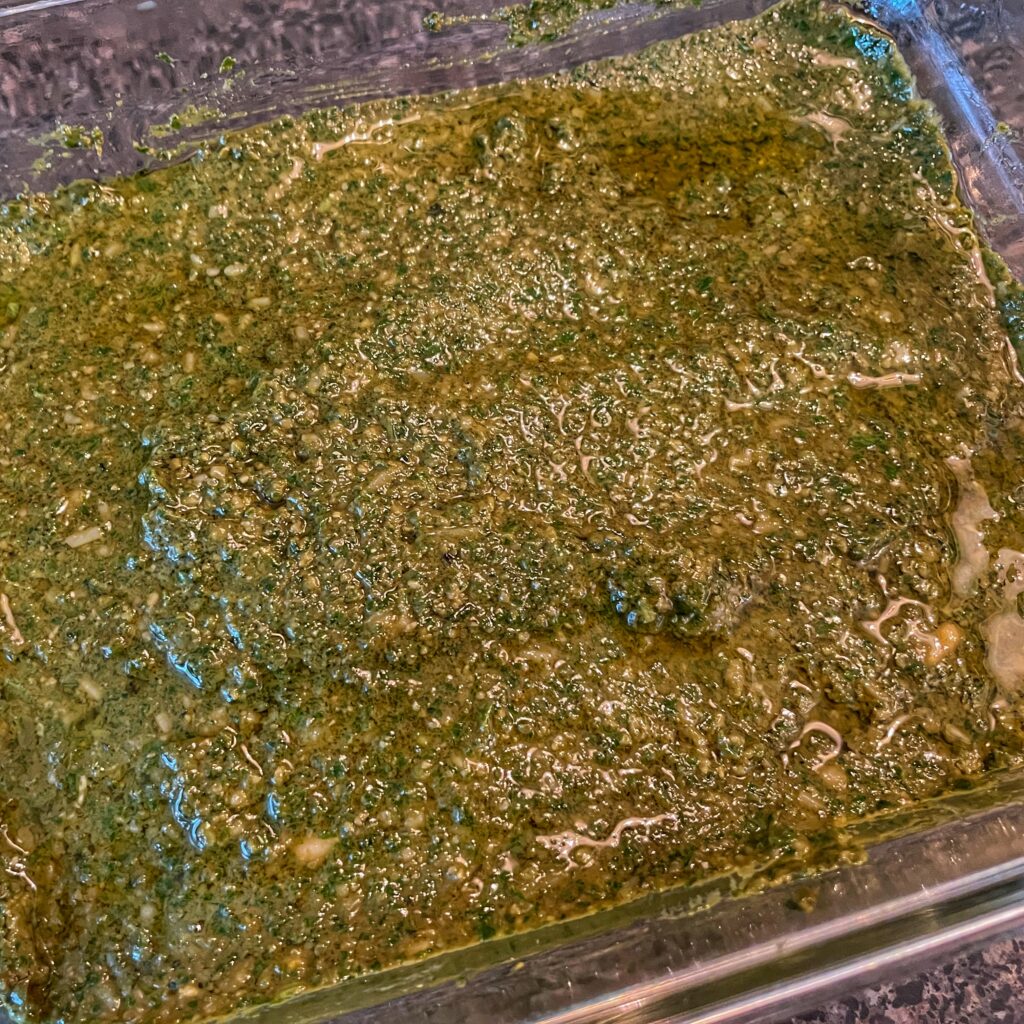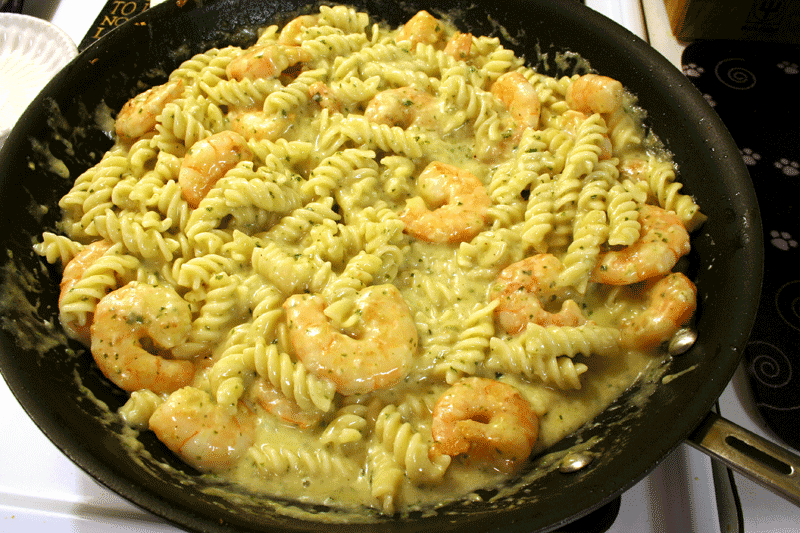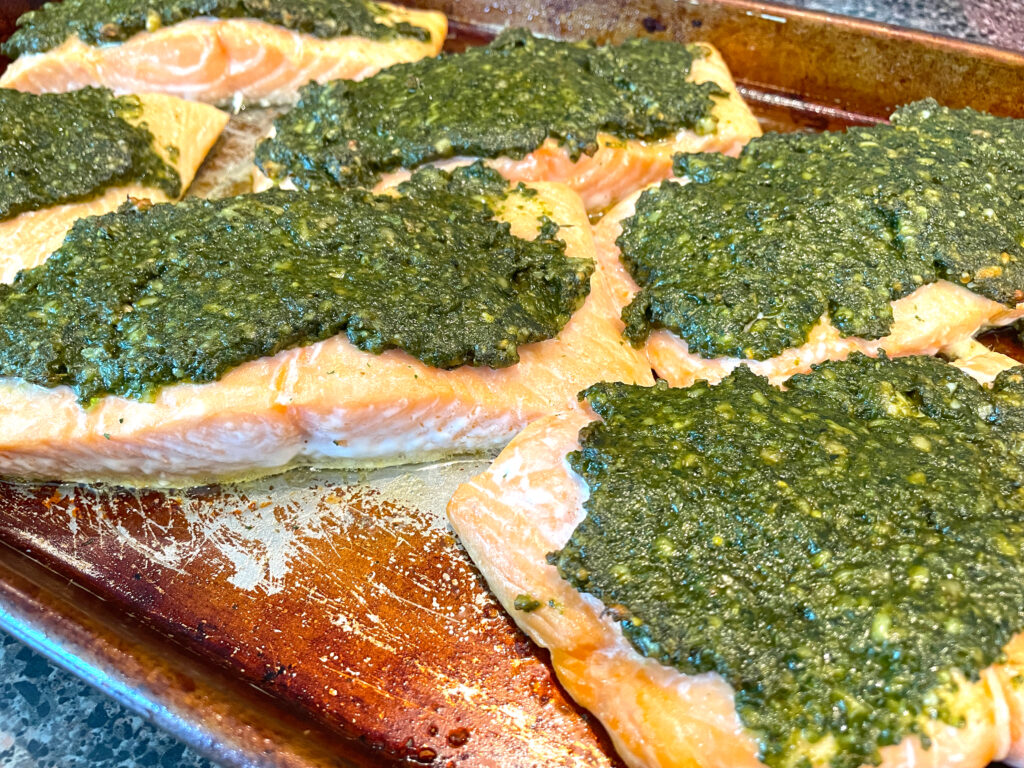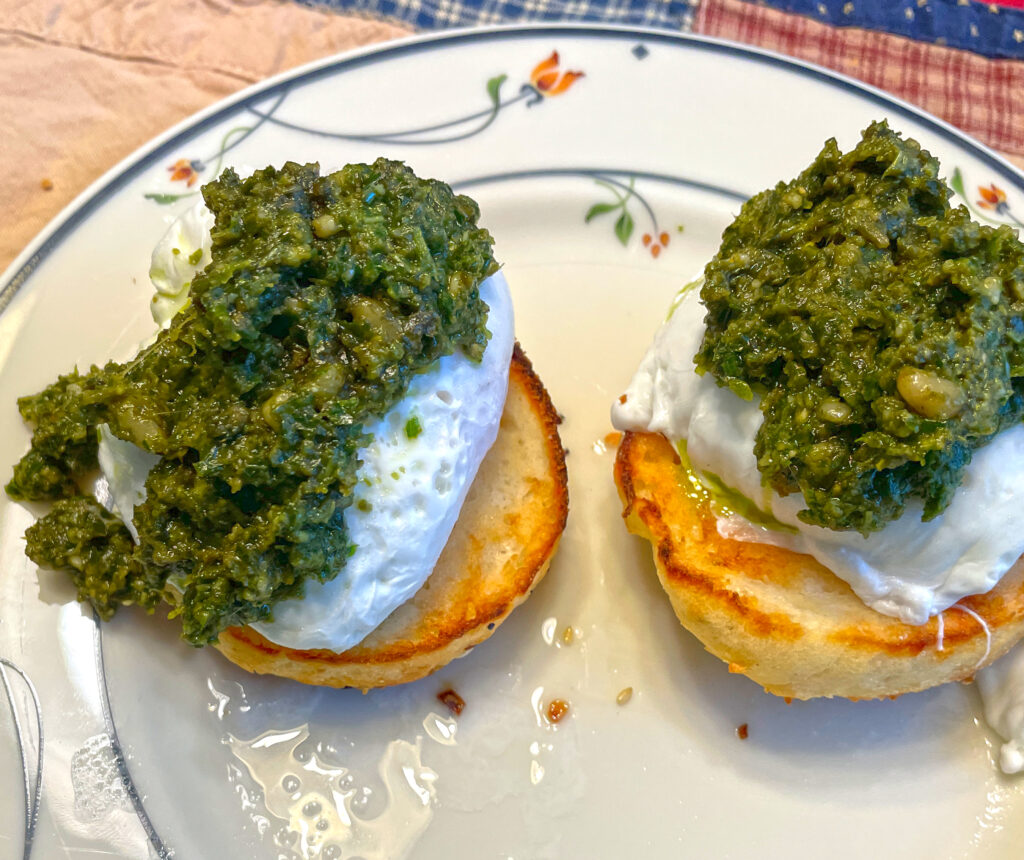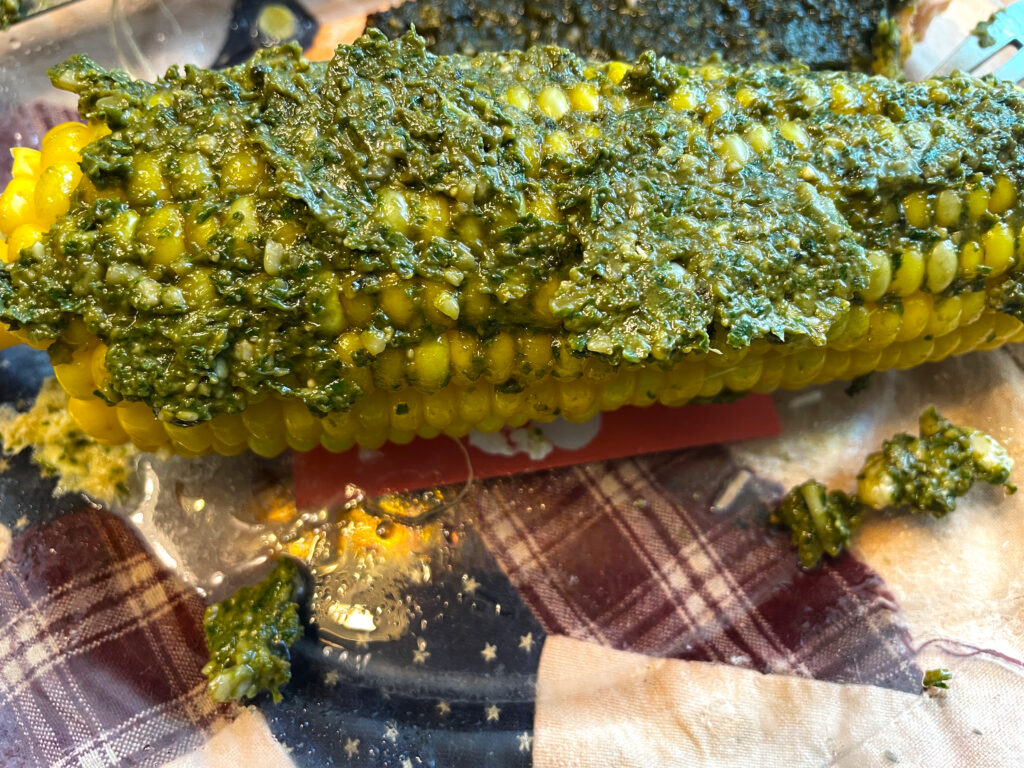This recipe is adapted from one I made while under the culinary guidance of Chef Chris Canan at the Columns Hotel in New Orleans, LA. Chef was an advocate of using local ingredients way before it came into vogue, as this was in the mid-1980’s. We obtained all of our fresh herbs from Crickhollow Farms out of Jayess, Mississippi and the weekly delivery also included farm raised rabbits, edible flowers and some organic baby vegetables and wild mushrooms as well. The basil pesto was primarily used for the Pasta Pesto Alfredo Shrimp appetizer, it was also used on occasion for other buffet menu items as well.
Basil pesto history and common uses
Here’s a brief overview of the history and common uses of basil pesto:
Pesto originated in Genoa, Italy and has been made there since at least the 16th century. The name comes from the Genoese word “pestâ” meaning to pound or crush.
Traditional basil pesto is made by crushing basil leaves, pine nuts, garlic, olive oil, and hard cheeses like Parmigiano-Reggiano together to form a thick sauce. The original recipe called for using a mortar and pestle to pound the ingredients together, but blenders are typically used now.
Basil pesto became popular outside of Italy in the 1980s and has since become a staple sauce in many cuisines. It is commonly used as a pasta sauce, as a topping on pizza, in sandwiches and wraps, with grilled meats or fish, as a dip, and more.
While traditional pesto uses basil, pine nuts, and Parmesan, many variations have emerged using other herbs like parsley or arugula, and different nuts like walnuts or almonds. The basic recipe remains basil, cheese, nuts, garlic, and olive oil pounded into a texture that can coat and cling to food.
Pesto is valued for its strong herbal flavors from the basil, sharpness from garlic and Parmesan, creaminess from the nuts and cheese, and rich texture from the olive oil. It can be made fresh in batches and freezes well for long term storage. Its versatility makes it a popular condiment worldwide today.
Now, onto the recipe for making your very own delightful basil pesto.
Ingredients
- 1/4 cup garlic cloves
- 1 cup pine nuts
- 1/2-pound fresh basil leaves
- 1 cup parmesan cheese, grated
- 1 cup olive oil, extra virgin
- To taste Salt and pepper (optional)
Instructions
- Add the garlic and pine nuts to the bowl of a food processor and pulse until smooth.
- Add the basil and pulse until finely chopped
- Add the parmesan cheese and blend while slowly pouring in the olive oil until a smooth paste forms.
- Optionally, season to taste with salt and pepper
- Transfer the basil to a storage container and keep refrigerated for up to 7-days, or freeze for several months.
Uses for basil pesto
Here are some popular recipes that use basil pesto:
Pesto pasta – Toss hot cooked pasta with pesto sauce for a quick and easy meal. Add vegetables like tomatoes or spinach. Such as this recipe for Shrimp and Pasta Pesto Alfredo.
Pesto pizza – Spread pesto over the pizza dough, then top with mozzarella cheese, tomatoes, and other toppings.
Pesto chicken – Coat chicken breasts with pesto, then bake or grill them.
Pesto salmon – Top salmon filets with dollops of pesto before baking or pan-searing. Such as this recipe for Pesto Salmon.
Pesto bruschetta – Top toasted bread with pesto, tomatoes, and Parmesan.
Pesto wraps – Smear pesto inside tortillas or flatbread then fill with greens, deli meat, or veggies.
Pesto sandwiches – Use pesto as a flavorful spread on sandwiches in place of condiments like mustard or mayo.
Pesto eggs – Top poached eggs with basil pesto.
Pesto dressing – Whisk pesto into oil and vinegar for bold salad dressing.
Pesto dip – Thin pesto with a little olive oil to make a dip for bread, crackers, or vegetables.
Pesto potato salad – Fold pesto into warm boiled potato chunks along with other vegetables.
Pesto baked brie – Top a wheel of brie with pesto and bake until melty.
Pesto Corn – Top ears of corn with pesto in place of butter.
The possibilities are endless! Pesto can be swirled into soups, baked into frittatas, stirred into risotto, and more. Get creative with this versatile green sauce.








